England’s most famous female footballers in the 1921 Census
9-10 minute read
By Ellie Ayton | March 3, 2022
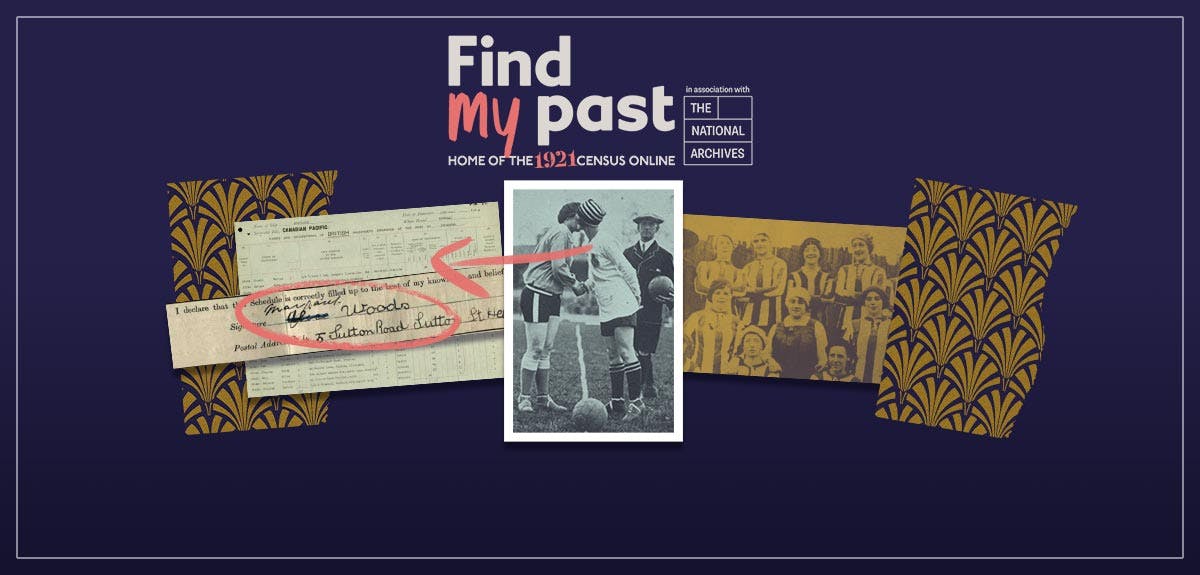
If you thought football was always a man’s game, you’d be wrong. The early 20th century saw the women’s game heading to the top and delighting audiences of tens of thousands. But it wasn’t to last.
Female soccer players were having a ball in the early 1900s.
During the First World War, women’s football hit a turning point. As women stepped up to the plate in the workplace, particularly in factories, they quickly turned their hands (or feet) to the beautiful game. Some would even argue women’s matches attracted more spectators than the men’s, detailed in newspaper reports of the time.
Search for your trailblazing female ancestors
What's their story?
But some were disturbed by the shining success of the women’s game and deemed it 'unsuitable for females'.
In December 1921, The Football Association flashed their red card, implementing a ban on women’s teams playing on FA grounds. This restricted the crowd size of their games, and women’s football lost some of its lustre. Resources, exposure, and the thousands of pounds raised for charities dwindled.
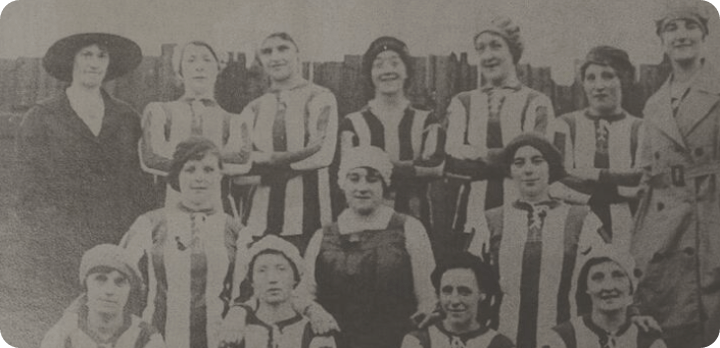
The original Dick, Kerr Ladies team in 1917, pictured in the Sunday Mirror, 21 February 1999.
The ban was in place until 1971: 50 years. It’s taken many decades for women’s football to recover in the United Kingdom, but finally, things are looking up.
But how did the Cinderella story of England’s most famous women’s football team begin?
It’s good to have goals
In 1917, as the First World War raged, a football team was founded at Dick, Kerr & Co. In Preston, Lancashire. Goal-orientated office worker Alfred Frankland noticed the ladies’ talent during kickabout games over tea breaks. Quite often, they were outshining the men. So, putting their best foot forward, Dick, Kerr Ladies was born: one of the first women’s association football teams.
They would go on to win games left, right and centre, dribbling overseas and putting points on the board across the country. The newspapers loved them. Thousands of pounds were raised from their charity matches, with funds supporting ex-servicemen, the unemployed and the homeless.
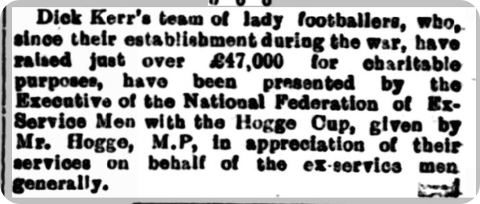
Barnsley Independent, 11 June 1921.
We wanted to find out what these sporting celebrities were up to in 1921, merely months before the FA ban that would restrict their game for decades to come. Not much is known about their backgrounds, and with not unusual names, they became tricky to pinpoint. So, we turned to our other family history records to take home the trophy.
Putting the right foot forward
We know that in 1922, the Dick, Kerr Ladies team went on a football tour across the pond in the United States. Apparently, they were originally to play in Canada, but were restricted from playing there. So, they hopped over the border to the States.
We decided to explore our travel records, quickly spotting the team in our Passenger Lists, sailing from Liverpool to Montreal, Canada, on 16 September 1922 aboard the Montclere.
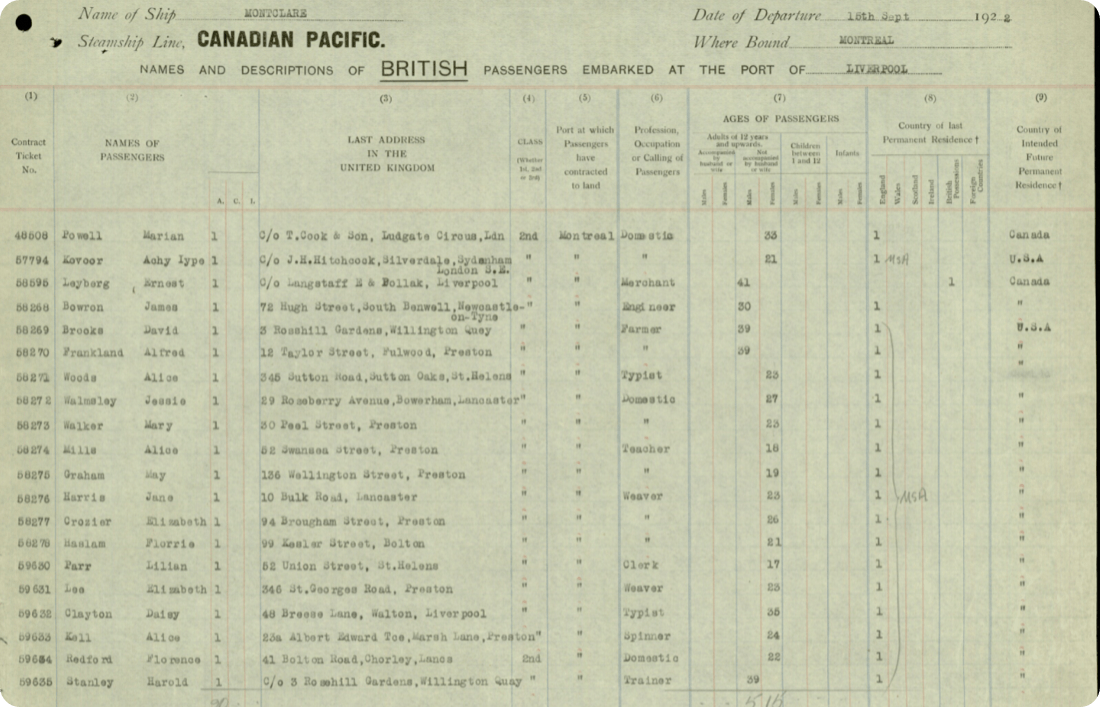
The Dick, Kerr Ladies travelling to Canada in 1922, in the Passenger Lists Leaving the UK 1890-1960.
This was a key clue in finding the players in the 1921 Census. The treasure trove of a record not only listed manager Alfred Frankland and his team, including Florence ‘Florrie’ Redford and Alice Woods, but also their ages, occupations, and addresses. It’s intriguing that none of their occupations were noted as ‘footballer’.
Using this, what can we learn about the team in 1921 and beyond?
Alice Woods
Born in St Helens, Lancashire in 1899, Alice began playing football while working at a munitions factory. Using our address search, we found her at 345 Sutton Road, St Helens in the 1921 Census.
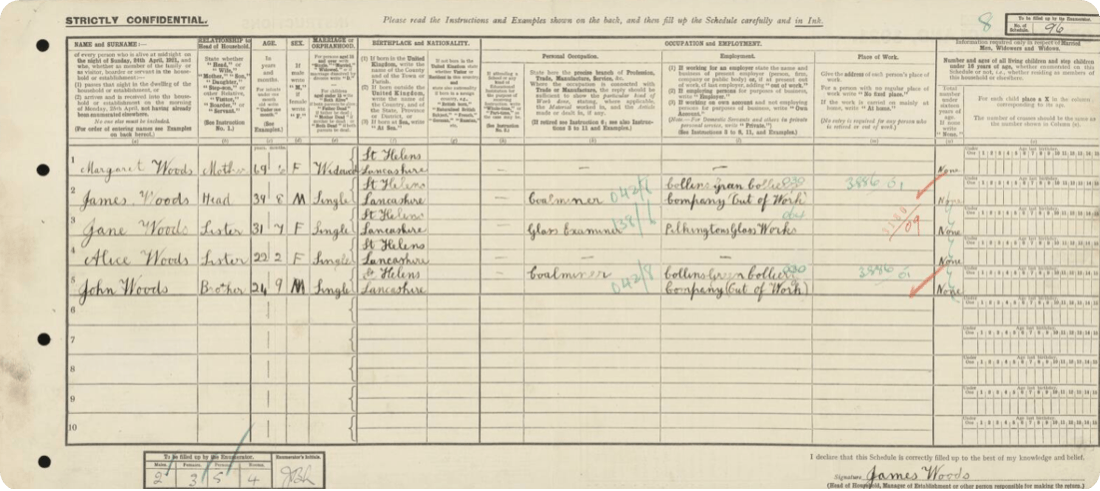
Alice Woods and her family in the 1921 Census of England and Wales.
We learn that her mother Margaret is a widow and that her brothers are out of work coal miners. The only person working in the four-room house is Alice's sister Jane, a glass examiner at Pilkington's Glass Works.
No occupation is listed for Alice, but we know Dick, Kerr Ladies were taking the football world by storm in 1921. Only a few weeks before the 1921 Census was taken, the press reported on Dick, Kerr Ladies’ most successful season yet.

Lancashire Evening Post, 6 June 1921.
Incredibly, the team won 58 out of 59 games, scoring 393 goals. To date, the most goals scored in a season by a men’s team in England is Peterborough United, scoring 134 goals in the season of 1960-61. We’ll let you do the maths.
Alice’s father James Woods died in 1902. We spotted the family on the 1911 Census too, and quite unexpectedly, we found that the 12-year-old Alice had filled out the return. Perhaps she was practicing her handwriting?

Alice’s signature on the 1911 Census.
Alice retired from football when she married Herbert Stanley in 1928.
She is survived by her granddaughter Yvonne, and great-granddaughter Lauren, a Commonwealth silver medallist. A sporting dynasty indeed.
Florrie Redford
While it’s believed that Dick, Kerr Ladies’ superstar Florrie Redford was born in Lancashire, the 1921 Census tells another story.
Using the address on the passenger list, we found her living at 41 Bolton Road, Chorley, with her parents Alfred, a coach painter from Oxfordshire, and Emma. Florence Ellen Redford was in fact born in Yorkshire in 1900.
While she was a ‘domestic’ by 1922, in 1921 she was a weaver for Spa Mill in Preston. Back in 1911, aged only 12, Florrie was at school part-time, while also working as a velvet weaver like her elder siblings. Girls With Balls author Tim Tate stated that before joining the team, Florrie was training to become a psychiatric nurse.

The iconic photo of Florrie meeting French captain Carmen Pomies before an international game in 1925, pictured in The Sphere, 16 May 1925.
In 1920, Dick, Kerr Ladies played a series of four charity matches against the French, becoming the first women’s international football matches. A crowd of 25,000 delighted in the first match. The Ladies won 2-0. Florrie scored one of the goals, making history.
Lily Parr
Sixteen-year-old Lily Parr was a soccer sensation. She began playing for Dick, Kerr Ladies in 1920, kicking home scores of goals over her career: they numbered at nearly 1,000, which may well be a record.
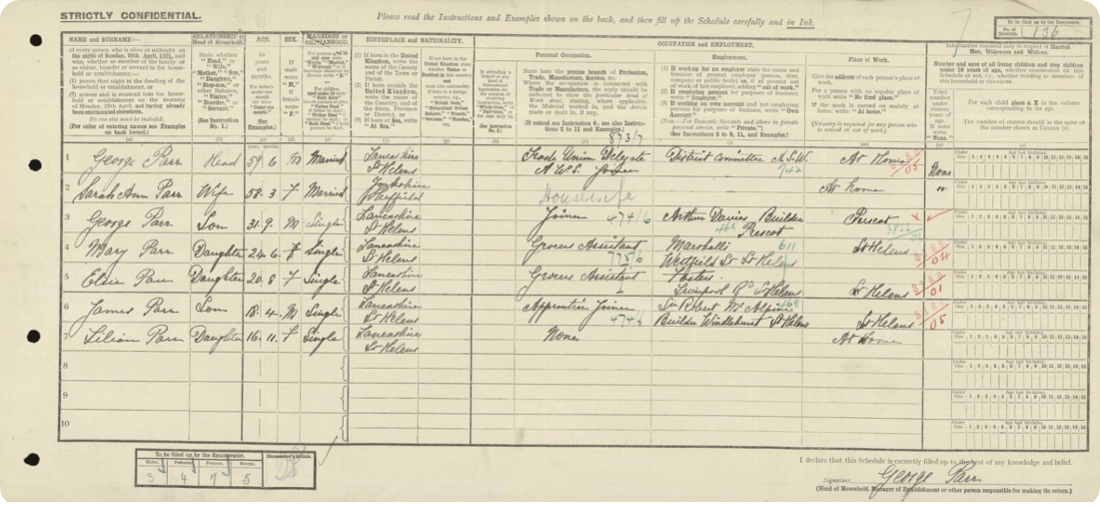
Lily Parr and her family in the 1921 Census.
In 1921, Lily was living with her parents, George and Sarah, and her older siblings, at 78 Harris Street, St Helens. She was the only one in the household without an occupation, and yet in reality, she was on a winning streak.

Lancashire Evening Post, 3 January 1921.
On New Year’s Day in 1921, Dick, Kerr Ladies played the Rest of Lancashire in a charity match, where Lily scored a hat-trick.
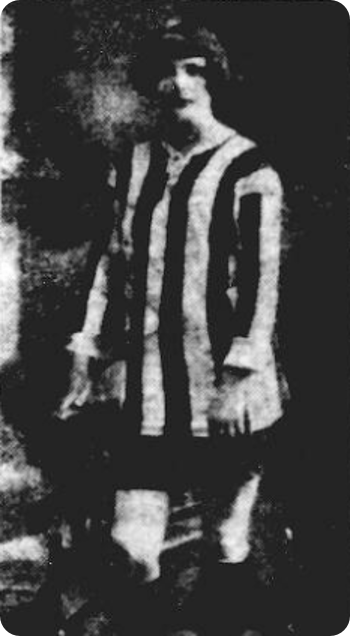
Lily Parr, ‘the cleverest girl in football,’ and ‘the girl with the wicked kick,’ pictured in the Lancashire Daily Post, 10 May 1924.
By 1939, Lily was living with sisters Mary and Norah Bowles, all three of them ‘mental nurses.’ This could even be the same Mary who was Lily’s long-term partner, given as they met through their work at Whittingham Hospital. Though, we should note this Mary later either married, or changed her surname to Moss.
Lily and Mary lived together for the rest of Lily’s life, during a time where lesbian relationships were not accepted as they are today.

Lily Parr in the 1939 Register. View the full record here.
Lily died of breast cancer in 1978. In 1921, she became the first female player to have a statue installed at the National Football Museum in Manchester. There is also a trophy named after her. A winning combination? We think so.
Florrie Haslam
We know Florrie Haslam was born in Bolton in 1900. She was initially a bit of a mystery to track down, but a few clues later we scored.
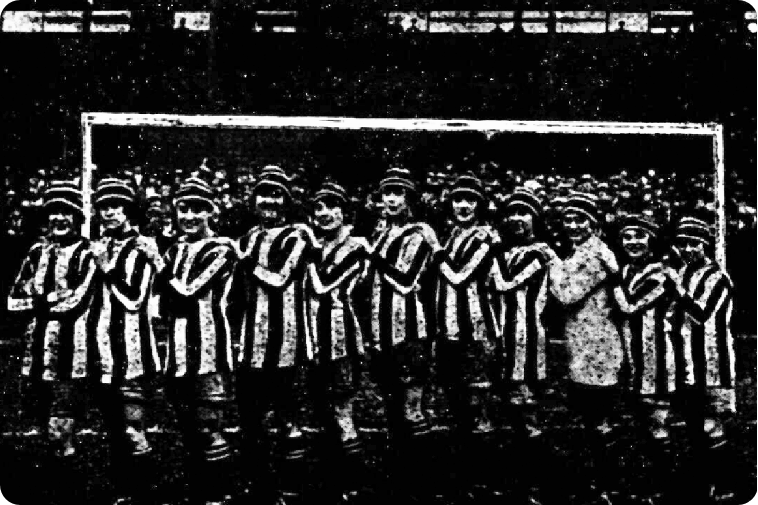
Derbyshire Advertiser and Journal, 2 September 1921.
We found this fantastic photo of the team in September 1921, when they played Coventry Ladies. An incredible £600 was raised for local hospitals. Also playing with Florrie Haslam was the French star, Carmen Pomies.
Sadly, we learned that Florrie’s brother Thomas died of wounds during the First World War, so she likely felt strongly about raising money for local war charities. Barely two years later, her father was a casualty of the Spanish Flu pandemic, another detail we found on Thomas’s service record. It told us of his sisters, Florrie and Nellie, and the nature of his wounds.
A page from Thomas Haslam’s service record, detailing his enlistment date, and the date of his death in 1916. The next pages tell us he fought in France, possibly at the Somme.
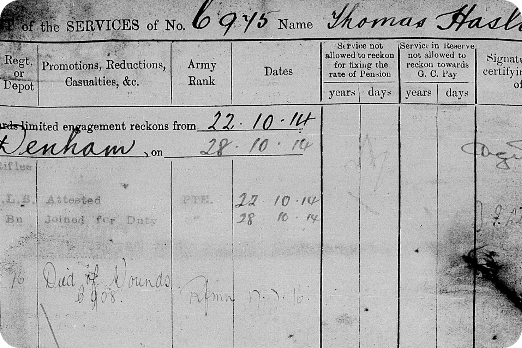
Key details from this record helped us spot Florrie in the 1921 Census.
She and her sister Nellie were living at 335 Bury Road, Bolton, with their aunt Margaret Maguire. By this point, their father Abraham had died. Nellie Haslam was a cinema operator at the Picture Palace, and Florrie was a cutter and parceller at Blackshaw Dye Works (in between scoring goals for Dick, Kerr Ladies, that is).

Florrie Haslam in the 1921 Census. You can view the full record here.
Like many of her teammates, she also went into nursing after the FA ban came into force.

Florrie Haslam in the 1939 Register. View the full record here.
By 1939, Florrie was living in Chertsey with a colleague. She’d qualified as a nurse, worked in the north and the Midlands, before moving south. Her occupation was given as a ‘Queen’s District Nurse.’ She died in 1984.
Alice Kell
Alice Kell was born in Preston in 1898. She was the first captain of the Dick, Kerr Ladies team, playing in their first match on Christmas Day in 1917.

‘One or two of the girls, I am told, are very clever,’ writes a journalist in the Lancashire Evening Post, 22 December 1917, ahead of Dick, Kerr Ladies’ first match at Deepdale.
Like her teammate Florrie Haslam, Alice also lost a brother to the First World War. Thomas William Kell died on 15 June 1915 and is remembered on the Le Touret Memorial in France.

Alice and her family in the 1921 Census.
Alice’s father worked on the railways, a profession her surviving brothers also entered. By 1921, the family were living at 239 Albert Edward Terrace, Preston. Alice’s official occupation was a cotton weaver for Brotherton and Harrop, and not a star footballer.

Lancashire Evening Post, 2 February 1918
Alice married Reginald Cook in 1927, and they had one son, Reg. She continued to be closely affiliated with the team, even acting as a chaperone for the players.
Discover 101 cultural figures in the 1921 Census
View this map full screenDid your female ancestor buck the trend and carve her own path? Share your incredible stories with us on Facebook, Twitter and Instagram.
Related articles recommended for you
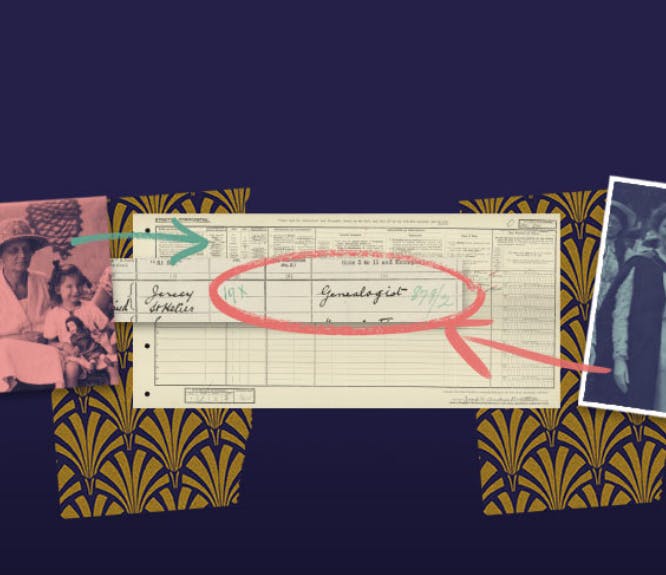
Genealogists in the 1921 Census of England and Wales: discover a profession that stands the test of time
History Hub

Preserving the story of your ancestry: our expert guide to writing your family history
Help Hub

Are you related to your partner? Find out with this brand-new feature
The Findmypast Community

